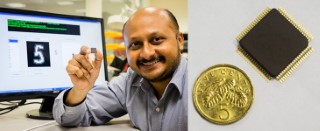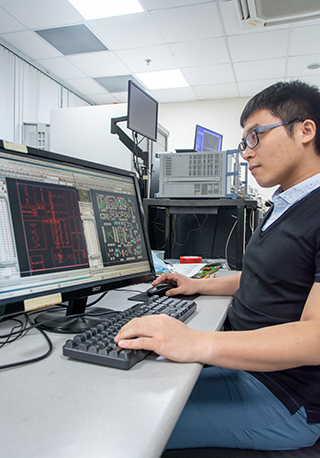CICS, Centre for Integrated Circuits and Systems
What we doCICS, Centre for Integrated Circuits and Systems is jointly funded by Nanyang Technological University (NTU) and Singapore Economic Development Board (EDB) (previously named VIRTUS), aims to be a world-class IC design house, developing key
technologies required to design integrated circuits and systems for applications in medical technology, clean technology and consumer electronics. The centre brings together key actors from IP, fabless, semiconductor, system houses and design industry
to build a vision of the next step in analog/digital/mixed integrated circuit and system design. The centre’s research activities can be broadly divided into the following major areas, namely analog, mixed‐signal, power management and data converters;
energy harvesting; low‐power RF and mm‐wave ICs; and new technology directions such as 3D‐integration and physical design; 3D RF and mixed‐signal circuits; and terahertz ICs etc..
The set up of CICS is in line with Singapore’s
four new growth areas in the electronics sector - green electronics, bioelectronics, plastic electronics and security. In the near future, consumers can look forward to electronic devices such as laptops, PDAs and mobile phones that are ultra-low
powered or self-powered. This is made possible with power management and energy harvesting technologies which are critical elements for power optimisation and higher energy efficiency in electronic devices and systems.
Seven top American,
European and Chinese universities have signed memoranda of understanding with CICS to collaborate in joint research in IC design. These seven universities are University of Michigan; Purdue University; University of California, Los Angeles, or
UCLA; Technical University Munich; Linköping University; Zhejiang University; and Fudan University.
Besides academic collaborations, CICS has also forged close partnerships with leading industry players including Mediatek,
Agilent Technologies, Verigy, SiliconCore Technology, United Microelectronics Corporation, Infineon, Broadcom Corporation and A*STAR Institute of Microelectronics. In addition, six organisations have pledged to contribute five-and-a-half million Singapore
dollars to CICS to carry out advanced IC design research. The six are A*STAR Exploit Technologies Pte Ltd, Infineon, Mediatek, SilconCore Technology, Systems on Silicon Manufacturing Company and Verigy.
CICS will continue to
establish joint collaboration with world renowned universities, top research institutions and well-known companies in its pursuit of excellence in research and development in IC design and technology.


Research Focus
The centre's research focus on the following 5 main areas:
1. Analog, Mixed-signal, Power Management and Data Converters
2. Memory and Advanced Techniques in Nano-scale CMOS
3. RF and mm-wave
4. Smart Sensors
5. Technology Direction and System Integration
Our News
Read more newsPutting a Brain on a Chip
Portable and wearable devices such as health sensors could soon become smarter with a new invention by Nanyang Technological University (NTU).
Researchers from NTU’s School of Electrical and Electronic Engineering (EEE) have developed a smart chip that could imbue devices with artificial intelligence at minimal energy and cost.
The small and lightweight prototype, when mounted on a headgear, could help decode a monkey’s brain waves and predict how it wanted to move its fingers with 99.3% accuracy. This could pave the way for implants and portable devices to help paralysed people regain use of their limbs.
The chip could also enable surveillance cameras and sensors to automatically identify intruders and alert security staff, and empower health-monitoring devices to recognise when a person is about to suffer a heart attack or epileptic seizure, and call for help.
The invention taps on manufacturing imperfections that occur in the electronics sector. Transistors in electronics devices invariably deviate to some degree from the design and from one another due to manufacturing inconsistency.
The chip taps the resulting, unintended variations in the transistors’ threshold voltage. It uses mathematical formulas that multiply input signals such as brain waves, temperatures, pressure, sounds and images using the transistors’ varying threshold voltages. This fleshes out similarities and differences among the signals.
The chip can then better compare each signal to specified patterns. A doctor could study an epilepsy patient’s brain activity and programme the chip to recognise the signature of an impending episode, so that help can be activated when needed.
To achieve the same results, conventional smart chips have to use an additional component and more processes, so that their power usage is more than 100 times that of the NTU EEE chip.
The NTU EEE scientists are developing an implant integrated with their chip for brain-machine interfaces. They have also received a $250,000 grant from the Singapore-MIT Alliance for Research and Technology to improve their prototype.
- Interviews



